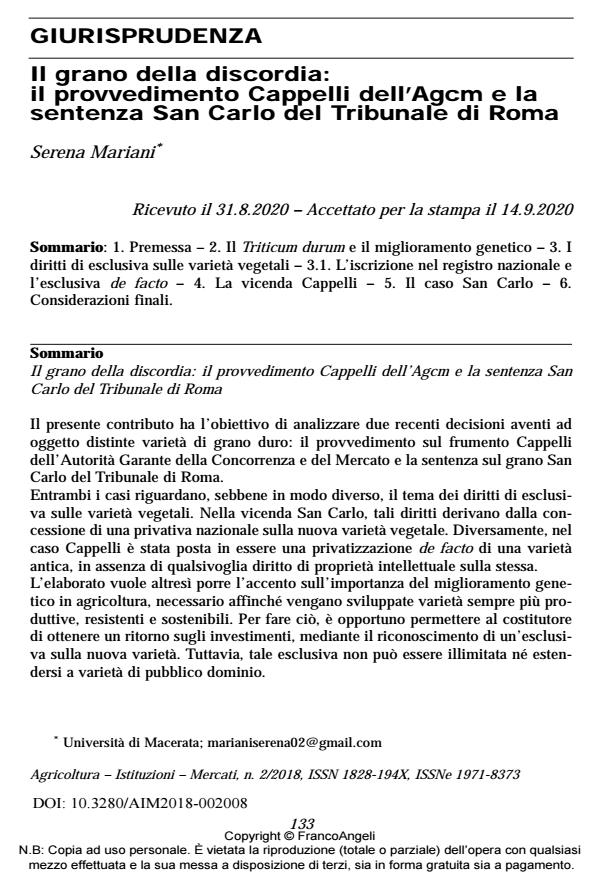Wheat of contention: the Cappelli decision of the Italian Antitrust Authority and the San Carlo judgment of the Tribunale di Roma
Journal title AGRICOLTURA ISTITUZIONI MERCATI
Author/s Serena Mariani
Publishing Year 2021 Issue 2018/2
Language Italian Pages 27 P. 133-159 File size 103 KB
DOI 10.3280/AIM2018-002008
DOI is like a bar code for intellectual property: to have more infomation
click here
Below, you can see the article first page
If you want to buy this article in PDF format, you can do it, following the instructions to buy download credits

FrancoAngeli is member of Publishers International Linking Association, Inc (PILA), a not-for-profit association which run the CrossRef service enabling links to and from online scholarly content.
The current study has the purpose to analyse two recent decisions about distinct plant varieties of durum wheat: the Cappelli decision of the Italian Antitrust Authority and the San Carlo judgment of the Tribunale di Roma. Both cases focuses, although in a different way, on exclusive rights over plant varieties. In the San Carlo instance, the exclusive rights arise from the grant of a national plant variety right over the new variety. Whereas, in the Cappelli case, there has been a de facto privatization of an ancient variety, deprived of any intellectual property right whatsoever. The study also aims at highlighting the importance of plant breeding for agricultural purposes in order to develop more productive, resistant, and sustainable varieties. To this end, it is deemed necessary to allow the breeder’s return on investment, through the recognition of an exclusive right on the new variety. However, such an exclusive right shall not be limitless nor concern public-domain varieties.
Keywords: Plant breeding; plant variety; plant variety right; breeder’s right; intellectual property; seed marketing legislation.
Serena Mariani, Il grano della discordia: il provvedimento Cappelli dell’Agcm e la sentenza San Carlo del Tribunale di Roma in "AGRICOLTURA ISTITUZIONI MERCATI " 2/2018, pp 133-159, DOI: 10.3280/AIM2018-002008